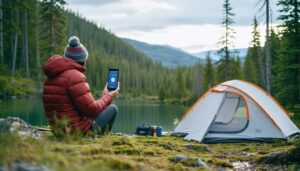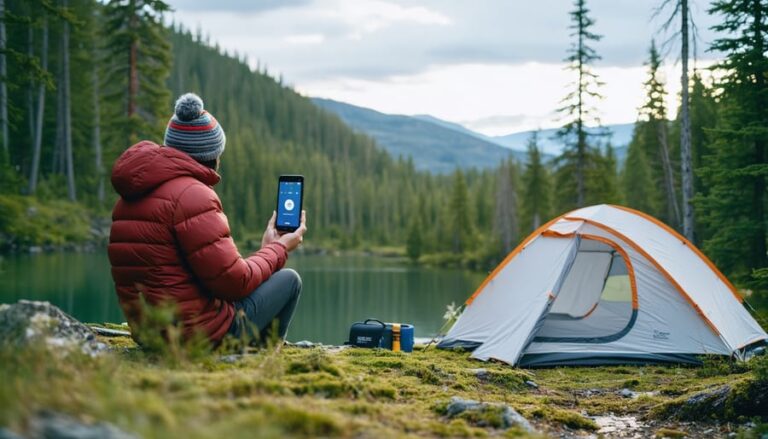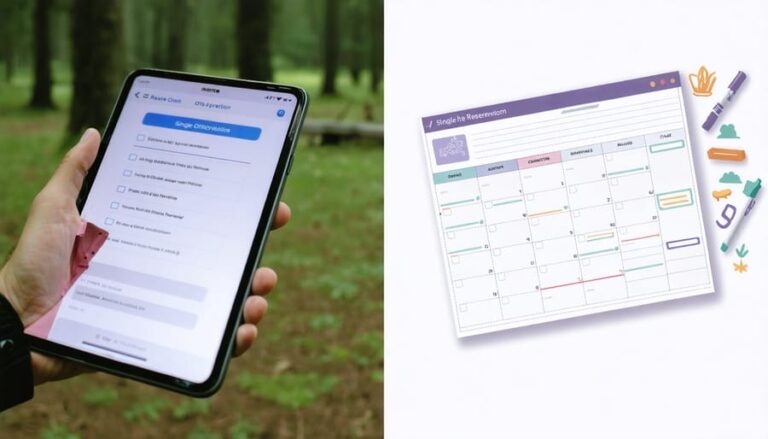Hoist your canoe onto sturdy shoulders, grasp those gunwales firmly, and step into the centuries-old tradition of portage canoeing across Ontario’s stunning waterways. This time-honored practice of carrying your vessel between lakes and rivers opens up a wilderness playground that’s otherwise impossible to reach. Master the art of portaging to unlock hidden lakes, pristine campsites, and secluded fishing spots that most visitors never experience. Whether you’re planning a weekend adventure or a week-long expedition, portage canoeing combines paddling prowess with hiking endurance to create the ultimate backcountry experience. Learn proper lifting techniques, pack strategically with waterproof gear, and navigate using detailed topographical maps to transform challenging carries into rewarding adventures that connect you deeply with Ontario’s wild spaces.
Essential Portage Canoeing Skills
Proper Lifting and Carrying Techniques
Lifting and carrying a canoe might seem daunting at first, but with proper technique, it’s quite manageable for most people. Start by standing at the center of the canoe on the left side. Place your right hand on the closest gunwale (the top edge of the canoe) and your left hand on the far gunwale. In one smooth motion, lift and flip the canoe onto your thighs.
Next, slide your body under the middle of the canoe while rotating it overhead. Position the center yoke (the curved wooden bar) across your shoulders. The yoke should rest comfortably on your shoulders, with the canoe balanced above you. Your head should be between the gunwales, with good visibility ahead.
Pro tip: Before attempting to lift a canoe, remove all gear and secure any loose items like seats. If you’re new to portaging, practice lifting with a friend nearby – they can help steady the canoe as you get used to the motion.
When carrying, keep your back straight and take short, steady steps. Look about 10 feet ahead of you to anticipate terrain changes. If you need to rest, slowly lower the canoe onto your thighs first, then gently place it on the ground. Remember to bend at the knees, not the waist, when setting the canoe down to protect your back.
For shorter paddlers or heavier canoes, consider using a padded yoke or taking breaks more frequently. Your safety and comfort should always come first!

Navigation and Trail Reading
Finding your way through Ontario’s wilderness is easier than you might think, thanks to well-marked portage trails and a few key navigation skills. Portage routes are typically marked with orange triangles or diamonds on trees, indicating both the start and end points of the trail. These markers are your best friends on the trail, so keep an eye out for them!
When reading the terrain, look for natural indicators of portage routes. Well-worn paths, cleared areas between lakes, and slight depressions in the ground often signal established portage trails. In many cases, you’ll notice these trails running parallel to rapids or waterfalls – the very obstacles you’re trying to bypass.
Pro tip: Before setting out, take a photo of the trailhead marker with your phone. This helps you identify the correct spot when returning, especially if there are multiple portage options in the area.
Understanding topographic maps is crucial for successful portaging. Look for the dotted lines that indicate portage routes, and pay attention to contour lines – tightly packed lines mean steep terrain, while widely spaced lines indicate gentler slopes. This knowledge helps you prepare mentally and physically for what’s ahead.
Remember to practice Leave No Trace principles while navigating. Stick to established trails to prevent erosion and protect vegetation. If you’re unsure about a route, it’s better to backtrack than to create new paths through the wilderness.
Top Portage Routes in Ontario
Algonquin Provincial Park Classics
Algonquin Provincial Park offers some of Ontario’s most beloved canoe routes, with options perfect for every skill level. For beginners, the Lake of Two Rivers to Pog Lake route provides a gentle introduction to portaging, featuring a short 295-meter carry and peaceful paddling through classic Canadian Shield landscape.
Intermediate paddlers will find their sweet spot on the Canoe Lake to Tom Thomson Lake circuit. This two to three-day journey takes you through stunning lakes connected by manageable portages, with the added bonus of visiting the memorial cairn of famous Canadian artist Tom Thomson.
For experienced adventurers seeking a challenge, the Barron Canyon route delivers both breathtaking scenery and serious paddling. This route includes several portages ranging from 420 to 590 meters and rewards paddlers with views of 100-meter-high cliffs rising dramatically from the Barron River.
The Western Uplands route, starting from Cache Lake, offers an excellent multi-day option that showcases Algonquin’s diverse ecosystems. You’ll paddle through narrow channels, cross several portages, and likely spot wildlife like moose, beavers, and loons along the way.
Insider tip: Book your permit well in advance for popular routes, especially during peak season (July-August). Consider visiting during September when the fall colors are spectacular and the lakes are less crowded. Remember to practice “leave no trace” principles and store food properly in bear-proof containers at designated campsites.
For day trips, the popular Smoke Lake to Ragged Lake route offers a perfect taste of Algonquin portaging without requiring an overnight stay. The 590-meter portage might seem challenging, but the pristine waters of Ragged Lake make it worth every step.

Hidden Gems in Frontenac
While the Big Salmon Lake Loop gets all the attention, Frontenac Provincial Park holds several hidden treasures for portage enthusiasts willing to venture off the beaten path. The Buck Lake to Little Clear Lake route offers a serene 3.5-kilometer journey through less-traveled terrain, rewarding paddlers with pristine wilderness and excellent bass fishing spots.
For a challenging day trip, try the Little Salmon Lake to Moulton Lake connection. This lesser-known route features a steep 400-meter portage that leads to one of the park’s most secluded lakes, where you might spot osprey diving for fish or deer drinking at the shoreline.
The Hidden Valley Loop, starting from Big Salmon Lake, is another gem that many visitors overlook. This 6-kilometer circuit includes three short portages and takes you through a fascinating landscape of ancient Canadian Shield rock formations. Pack a lunch to enjoy at the granite outcrop overlooking Little Clear Lake – it’s one of the park’s best-kept secret picnic spots.
Nature photographers will love the Davis Lake route, especially during early morning hours when mist rises from the water and local wildlife is most active. The 275-meter portage might be rough, but the solitude and photo opportunities make it worthwhile.
Local tip: Visit these routes mid-week during shoulder season (May or September) for the most peaceful experience. The weather is still pleasant, and you’ll likely have these hidden passages all to yourself. Remember to bring a detailed park map, as trail markers on these less-traveled routes can be subtle.
Essential Gear and Packing Tips

Must-Have Portage Equipment
When it comes to backcountry essentials, having the right portage equipment can make or break your canoeing adventure. First and foremost, invest in quality portage yokes and pads – these are absolute lifesavers for your shoulders during those long carries between lakes.
A good set of quick-release portage packs is essential. Look for waterproof options with comfortable shoulder straps and hip belts. Pro tip: pack your gear in bright colors to spot them easily if they get separated from your group.
Don’t forget about portage wheels – they’re incredibly handy for longer carries, especially when traveling with families or less experienced paddlers. While purists might raise an eyebrow, there’s no shame in making your adventure more enjoyable!
For carrying your canoe, sturdy leather or neoprene padded shoulder straps are worth their weight in gold. Pack a repair kit with duct tape, marine sealant, and basic tools – you never know when you’ll need to fix something on the trail.
Remember to bring lightweight but durable rope for securing gear, and consider getting a folding camp saw for clearing fallen branches from portage trails. Keep a small first-aid kit easily accessible in your portage pack, and always carry a detailed map in a waterproof case.
Smart Packing Strategies
Smart packing can make the difference between an enjoyable portage and a grueling ordeal. The key is to organize your gear into waterproof packs that are easy to carry and balance your canoe. Start by using the “first in, last out” principle – pack items you’ll need at camp on top and emergency supplies where they’re easily accessible.
Break down your gear into smaller, manageable bundles rather than one massive pack. Aim for loads between 20-30 pounds that can be easily lifted and carried. Use properly sized dry bags or waterproof containers, and remember to distribute weight evenly between paddling partners.
A tried-and-true method is the three-pack system: one pack for camping gear, another for food and cooking equipment, and a third for personal items and day-use gear. Color-coding your bags or using different sizes helps quickly identify what’s what when you’re on the trail.
Consider using a yoke pad for comfort during carries, and attach small items securely to larger packs to minimize the number of trips across the portage. Keep frequently needed items like snacks, water, and navigation tools in a small daypack that stays with you.
Pro tip: Pack a separate “portage bag” with essentials like bug spray, first aid supplies, and quick-energy snacks that you can easily grab for shorter carries. This saves you from unpacking larger bags during brief stops.
Remember to leave no trace by avoiding single-use plastics and choosing reusable containers that pack efficiently and minimize waste.
Safety and Environmental Responsibility
Safety Precautions
Before heading out on your portage adventure, familiarize yourself with essential wilderness safety tips to ensure a worry-free journey. Always wear a properly fitted personal flotation device (PFD) while on the water – no exceptions! Let someone know your planned route and expected return date, and carry a reliable means of communication like a satellite phone or emergency beacon, as cell service can be spotty in remote areas.
Pack a well-stocked first aid kit and know how to use it. Include basics like bandages, antiseptic wipes, and any personal medications. Keep an emergency kit with waterproof matches, a flashlight, and emergency shelter in a dry bag. Check weather forecasts before departing and be prepared to adjust your plans if conditions become unsafe.
When portaging, always scout your landing spots and take breaks when needed – there’s no shame in making multiple trips to avoid exhaustion. Remember, most accidents happen when paddlers push beyond their limits or ignore warning signs. Stay within your skill level and trust your instincts!
Leave No Trace Principles
When portaging through Ontario’s pristine wilderness, it’s crucial to practice Leave No Trace principles to preserve these beautiful spaces for future paddlers. Always stick to established portage trails to prevent erosion and protect sensitive vegetation. Pack out everything you bring in, including food scraps and biodegradable items – they don’t belong in the wilderness.
Keep your rest stops at least 200 feet away from water sources, and use biodegradable soap sparingly when necessary. When nature calls, dig a small hole at least 6 inches deep and 200 feet from water sources, then cover it properly afterward.
Resist the urge to create new campfire rings – use existing fire pits instead, and keep fires small. Only collect dead and fallen wood, leaving standing trees (even dead ones) as they provide crucial wildlife habitat. Before leaving your campsite, ensure your fire is completely out and cold to the touch.
Remember, even small actions matter. Pick up any litter you spot along the trail, avoid marking trees, and keep noise levels down to preserve the wilderness experience for wildlife and fellow paddlers alike.
Ontario’s vast network of lakes, rivers, and waterways beckons adventurers to discover its natural wonders through portage canoeing. This time-honored tradition connects us not only to the province’s rich heritage but also to the pristine wilderness that makes Ontario truly special. Whether you’re a novice paddler taking your first steps into the backcountry or an experienced adventurer seeking new challenges, portage canoeing offers endless possibilities for exploration and personal growth.
From the crystal-clear waters of Algonquin Provincial Park to the rugged beauty of Killarney, each destination offers its own unique paddling adventures waiting to be discovered. Remember to always respect the environment, pack light but smart, and prioritize safety above all else. The skills you’ve learned – from proper lifting techniques to navigation – will serve you well on your journey through Ontario’s waterways.
As you plan your next portage canoeing expedition, consider starting with shorter routes and gradually working your way up to more challenging adventures. Join local paddling groups, share experiences with fellow enthusiasts, and never stop learning about this rewarding activity. Ontario’s wilderness is calling – grab your paddle, pack your gear, and set out to create your own unforgettable memories on the water.














+ There are no comments
Add yours